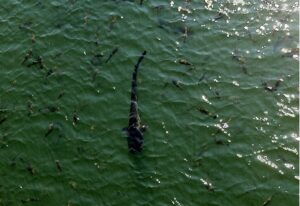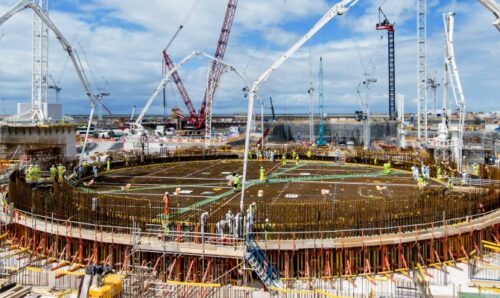Chernobyl Zone of Alienation
Public engagement 10 March 2017
Having discussed the engineering and installation of the Chernobyl NSC, it is important to keep in mind the lasting impact of the accident on the local population and the surrounding environment. Ellis Rintoul examines the Chernobyl exclusion zone and the future of this vast area of contaminated land.
The Zone of Alienation, commonly known as the ‘exclusion zone’, was established shortly after the Chernobyl incident with an initial radius of 30 km. This was quickly expanded to cover an area of 2600 km2 in Ukraine and a further 1313 km2 in neighbouring Belarus, resulting in the evacuation and mandatory relocation of close to 400,000 people, whilst a further 5 million people continue to live in areas contaminated by the incident [1].
The largest measurable health effect to afflict residents and evacuees has been increased rates of thyroid cancer; this is mostly due to the ingestion of milk contaminated by iodine. Whilst the half-life of 131I is short (8 days), nearly 5000 cases of thyroid cancer have been recorded in residents, who were children at the time of the accident, from Belarus, the Russian Federation and Ukraine [2].

The WHO Expert Group estimates that an additional 4000 cancer related deaths may yet occur in the residents of the controlled zones and exclusion zone evacuees. Although, amongst the cancer rates already predicted for such groups, this corresponds to just a 3-4% increase over normal incidence rates [2]. However, due to the large amount of uncertainties involved in such projections and other changes in the lifestyle of inhabitants of the region, the Expert Group was unable to clearly attribute any increased non-thyroid cancer risks to Chernobyl, which perhaps bodes well for the future of the people living within the affected zone [3].
As to how long humans will have to wait until the zone is completely habitable again, there is some debate. The half-life of 137Cs (30 years) has passed and the vast majority of the zone may be considered radiation-free in only a few centuries. That being said, the worst affected parts, like the reactor building itself, will remain dangerous for up to 20,000 years. These assessments are made difficult by ever-changing environmental factors, which can affect the distribution of the radioactive elements still present in unexpected ways. Indeed, areas like the red forest are unique in the hazards and radiation levels that they present [4].
In the meantime, whilst humans do not reside full-time within the exclusion zone, the fauna has flourished. Debate continues about the exact effects of the radiation upon animal health, but it can be agreed upon that despite any harmful effects, populations are not being suppressed and species that are rare elsewhere are thriving. Indeed, in 1998 the Przewalski horse (a rare and endangered subspecies of wild horse) was introduced into the zone and, thanks to minimal human interference, has grown in population size [5].
Challenging though the future may seem, the best course of action can only be to continue the clean-up effort, carefully monitor any lasting effects on the environment and the health of the local population and, crucially, let time take its course.
[1] – http://www.world-nuclear.org/information-library/safety-and-security/safety-of-plants/chernobyl-accident.aspx [2] – http://www.who.int/ionizing_radiation/chernobyl/backgrounder/en/ [3] – https://www.iarc.fr/en/media-centre/pr/2006/IARCBriefingChernobyl.pdf [4] – Environmental Consequences of the Chernobyl Accident and Their Remediation: Twenty Years of Experience Report of the UN Chernobyl Forum Expert Group “Environment” (EGE) August 2005 [5] – Przewalski Horses (Equus Ferus Przewalskii Polj., 1881) In Chernobyl Exclusion Zone In Belarus. T.G. Deryabina. (In Russian)



[…] also great survivors once established there. Accordingly, Mancuso has lots to say about plants in Chernobyl’s Zone of Alienation, and Hibakujumoku (“survivor tree or A-bombed tree in English is a Japanese term for a tree […]